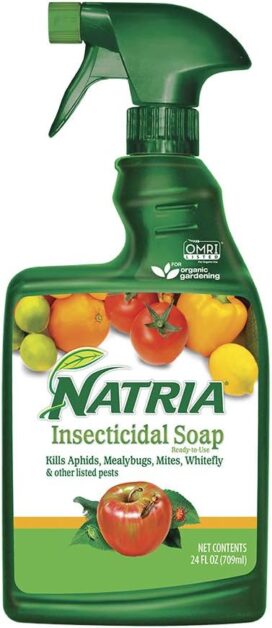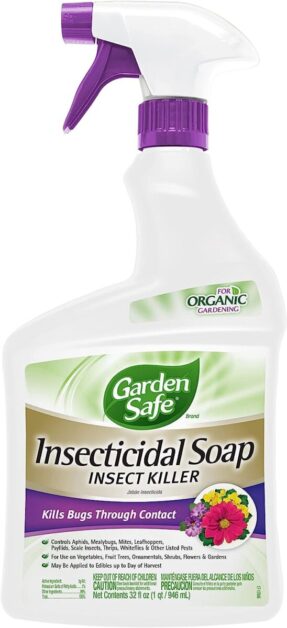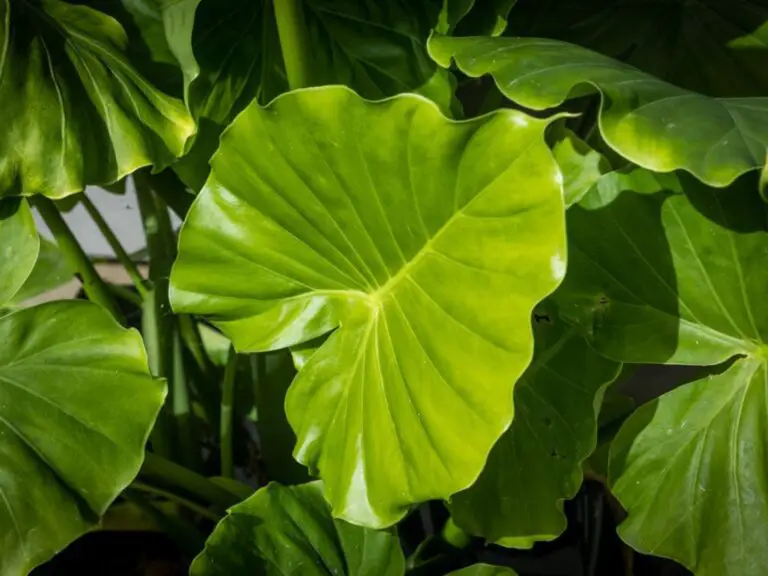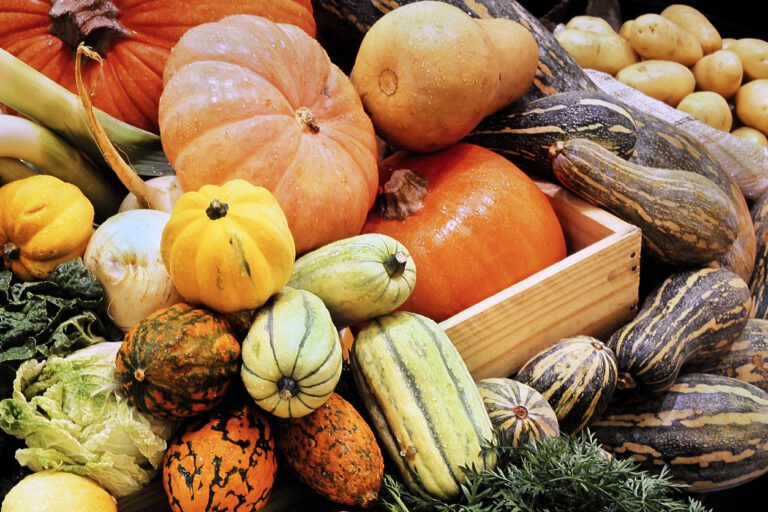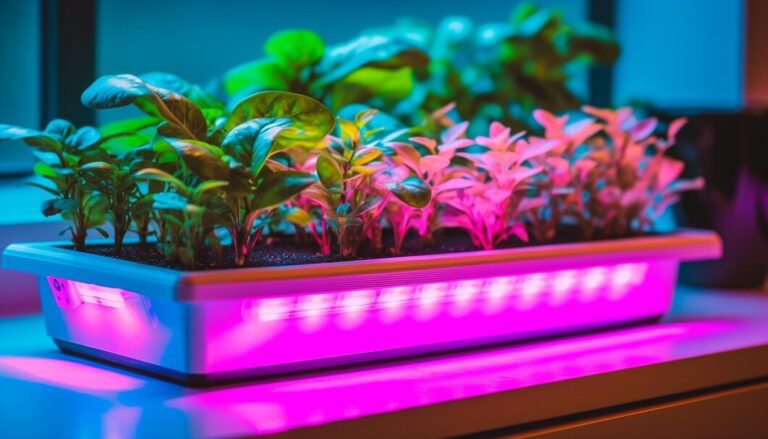Meyer Lemon tree grwoing guide: Sweeter Than Ever
“Ever dreamt of plucking a Meyer lemon tree straight from your own backyard, its tangy-sweet flavor bursting on your taste buds? Well, get ready to turn that dream into juicy reality! Meyer lemon trees are not just citrus marvels; they’re emblems of homegrown bliss. But before you dive into your lemony adventure, let’s squeeze out some essential know-how. From nurturing the sapling to harvesting golden orbs of citrusy delight, this guide has you covered. Whether you’re a green-thumb guru or a budding gardener, join us on a journey to cultivate the sweetest Meyer lemons yet. Let’s dig in and zest up our lives, one lemon at a time!”
Table of Contents
Understanding the Meyer Lemon Tree: A Brief Overview
The Meyer lemon tree, scientifically known as Citrus × meyeri, is a popular citrus variety that is prized for its sweet and tangy flavor. Named after Frank N. Meyer, the plant explorer who first introduced it to the United States in the early 20th century, this lemon tree has gained popularity among gardeners and citrus enthusiasts alike.

- Compact Size: The Meyer lemon tree is smaller in stature, typically growing to an average height of 6 to 10 feet (1.8 to 3 meters). This makes it ideal for gardeners with limited space or those practicing container gardening.
- Productivity: Despite its smaller size, the Meyer lemon tree is highly productive. It bears fruit abundantly throughout the year, providing a steady supply of delicious lemons.
- Fruit Appearance: Meyer lemons have a striking deep yellow color. Their thin, smooth skin and slightly oblong shape make them visually appealing.
- Flavor Profile: The flavor of Meyer lemons is less acidic compared to traditional lemons. This makes them enjoyable to eat raw or use in various culinary dishes.
- Culinary Uses: Meyer lemon juice is commonly used in sauces, marinades, desserts, and cocktails. The zest also adds a fragrant and citrusy note to recipes.
- Versatility: Due to its versatility and delicious taste, the Meyer lemon tree has gained popularity among both home gardeners and professional chefs.
Remember to care for your Meyer lemon tree by providing adequate sunlight, well-draining soil, and regular watering. Happy gardening! 🍋🌱
Selecting the Ideal Location for Your Meyer Lemon Tree
When selecting the ideal location for your Meyer lemon tree, it is crucial to consider certain factors that will optimize its growth and productivity.
:max_bytes(150000):strip_icc()/growing-meyer-lemon-trees-in-pots-848166-02-0e949f5ad3c845499964e908131b2f66.jpg)
- Sunlight Requirements: Meyer lemon trees flourish in areas with ample sunlight exposure, ideally six to eight hours of direct sunlight daily. This sunlight fuels photosynthesis, essential for robust fruit production.
- Soil Quality: Opt for well-draining soil with a slightly acidic pH level ranging from 5.5 to 6.5. Conduct a soil test to gauge pH levels and adjust as needed to create an optimal growing environment. Avoid heavy clay soil or areas prone to waterlogging to prevent root suffocation and potential root rot.
- Microclimate Consideration: Given Meyer lemon trees’ susceptibility to cold, assess your location’s microclimate. Shield them from frost and freezing temperatures by planting near a south-facing wall or in sheltered spots. This strategic placement traps warmth, offering vital protection, especially in colder regions.
By carefully selecting the ideal location for your Meyer lemon tree, you are setting the foundation for successful growth and bountiful harvests.
Preparing the Soil: Optimal Conditions for Growth
To ensure optimal growth and productivity of your Meyer lemon tree, it is crucial to prepare the soil with the right conditions. The soil serves as the foundation for your tree’s overall health and development, providing essential nutrients and a suitable environment for root growth.

In the next section, we will delve into the step-by-step instructions for planting your Meyer lemon tree, ensuring it gets off to a strong start.
“Having used Hoffman 15503 Canadian Sphagnum Peat Moss in my gardening endeavors, I can attest to its quality. Derived from premium Canadian sphagnum peat, it effectively enhances soil structure and moisture retention, fostering optimal conditions for plant growth. Its versatility shines through as it proves beneficial for various gardening tasks, from improving soil texture to providing insulation for plant roots.
However, while it’s a sustainable choice, concerns linger regarding its limited nutrient content, necessitating additional fertilization for robust plant development. Overall, Hoffman 15503 Canadian Sphagnum Peat Moss is a reliable option for gardeners seeking to enhance their soil’s health and productivity.”
- High-Quality Material: Hoffman 15503 Canadian Sphagnum Peat Moss is sourced from premium Canadian sphagnum peat, known for its excellent water retention and aeration properties, which promotes healthy plant growth.
- Versatile Use: This peat moss can be used for various gardening applications, including improving soil structure, enhancing moisture retention, and providing insulation for plant roots, making it a versatile addition to any garden.
- Organic and Sustainable: Produced from renewable peat bogs, this peat moss is an environmentally friendly choice for gardeners looking to maintain sustainable gardening practices.
- pH Balancing: Hoffman 15503 Canadian Sphagnum Peat Moss has a slightly acidic pH, making it ideal for acid-loving plants like blueberries, azaleas, and rhododendrons, and it can also help balance the pH of alkaline soils.
- Weed and Disease-Free: Free from weed seeds and harmful pathogens, this peat moss reduces the risk of weed infestation and soil-borne diseases, creating a healthier environment for plants to thrive.
- Limited Nutrient Content: While Hoffman 15503 Canadian Sphagnum Peat Moss improves soil structure and moisture retention, it lacks significant nutrient content, requiring supplementation with fertilizers or organic matter for optimal plant growth.
- Environmental Concerns: Despite being a renewable resource, the extraction of peat moss can have negative impacts on delicate peat bog ecosystems, raising environmental concerns about habitat destruction and carbon emissions.
- Potential for Compaction: Over time, peat moss may compact, reducing its ability to retain moisture and provide adequate aeration to plant roots, necessitating regular cultivation or mixing with other soil amendments to prevent compaction.
- Cost Consideration: Compared to other soil amendments, Hoffman 15503 Canadian Sphagnum Peat Moss may be relatively expensive, particularly for gardeners with large planting areas, which could affect its affordability and accessibility for some users.
- pH Adjustment Required: Depending on the specific needs of your plants and soil, pH adjustment may be necessary when incorporating peat moss, requiring additional testing and amendments to achieve optimal growing conditions.
Planting Your Meyer Lemon Tree: Step-by-Step Instructions
Once you have selected the ideal location for your Meyer lemon tree, it’s time to move on to the next crucial step: planting. Proper planting ensures that your tree establishes a strong root system and thrives in its new environment. Follow these step-by-step instructions to ensure a successful planting process.
1. Dig a hole: Begin by digging a hole that is twice the diameter of the tree’s root ball and at the same depth. This extra space allows the roots to spread out easily and encourages healthy growth.
2. Amend the soil: Meyer lemon trees prefer slightly acidic soil with a pH level between 5.5 and 6.5. Test the soil pH and, if necessary, amend it by adding organic matter such as peat moss or well-rotted compost. This will help create an optimal growing environment for your tree.
3. Remove the tree from its container: Gently tap the sides of the container or, if necessary, cut it away to carefully remove the tree’s root ball. Be sure to handle the root ball with care to avoid damaging the delicate roots.
4. Place the tree in the hole: Center the tree in the hole and ensure that it is level. The tree’s graft union, the bulge near the base, should be at or slightly above the soil level.
5. Backfill the hole: Begin filling the hole with the amended soil, gradually tamping it down to eliminate air pockets. As you backfill, take care not to bury the graft union or damage the roots.
6. Water thoroughly: After planting, give your Meyer lemon tree a deep watering to settle the soil and provide moisture to the roots. Aim for a slow, steady stream of water to ensure that it reaches the root zone effectively.
By following these step-by-step instructions, you are well on your way to successfully planting your Meyer lemon tree. With proper care and attention, you can look forward to enjoying an abundance of delicious lemons in the years to come.
Watering and Fertilizing Your Meyer Lemon Tree: Dos and Don’ts
Watering and fertilizing your Meyer lemon tree correctly is essential for promoting healthy growth and maximizing fruit production. Here are some dos and don’ts to ensure you are providing the optimal care for your tree:
| Aspect | Dos | Don’ts |
|---|---|---|
| Watering | – Consistent Moisture: Keep the soil consistently moist but not waterlogged. – Deep Watering: Water deeply to encourage root growth. – Check Soil: Regularly check the soil moisture level using your finger. | – Overwatering: Avoid waterlogged soil, as it can lead to root rot. – Shallow Watering: Don’t just water the surface; ensure water reaches the root zone. – Underwatering: Don’t let the soil dry out completely. |
| Fertilizing | – Balanced Fertilizer: Use a balanced, slow-release fertilizer specifically formulated for citrus trees. – Timing: Fertilize in spring and summer when the tree is actively growing. – Follow Instructions: Follow package instructions for proper application. | – Excessive Fertilization: Avoid over-fertilizing, as it can harm the tree. – Winter Fertilization: Don’t fertilize during the dormant winter months. – Fertilizing Near Trunk: Don’t apply fertilizer directly near the trunk. |
By following these dos and don’ts, you can ensure that your Meyer lemon tree receives the proper watering and fertilization it needs to thrive. Taking care of these essential aspects will contribute to the overall health and productivity of your tree, allowing you to enjoy an abundance of flavorful Meyer lemons.
Pruning and Training Your Meyer Lemon Tree for Healthy Growth
Pruning and training your Meyer lemon tree is essential for promoting healthy growth and maximizing fruit production. Regular pruning helps shape the tree, controls its size, and opens up the canopy to allow better air circulation and sunlight penetration. This, in turn, improves overall plant health and reduces the risk of disease. Training the tree involves manipulating its branches to attain the desired shape and structure.
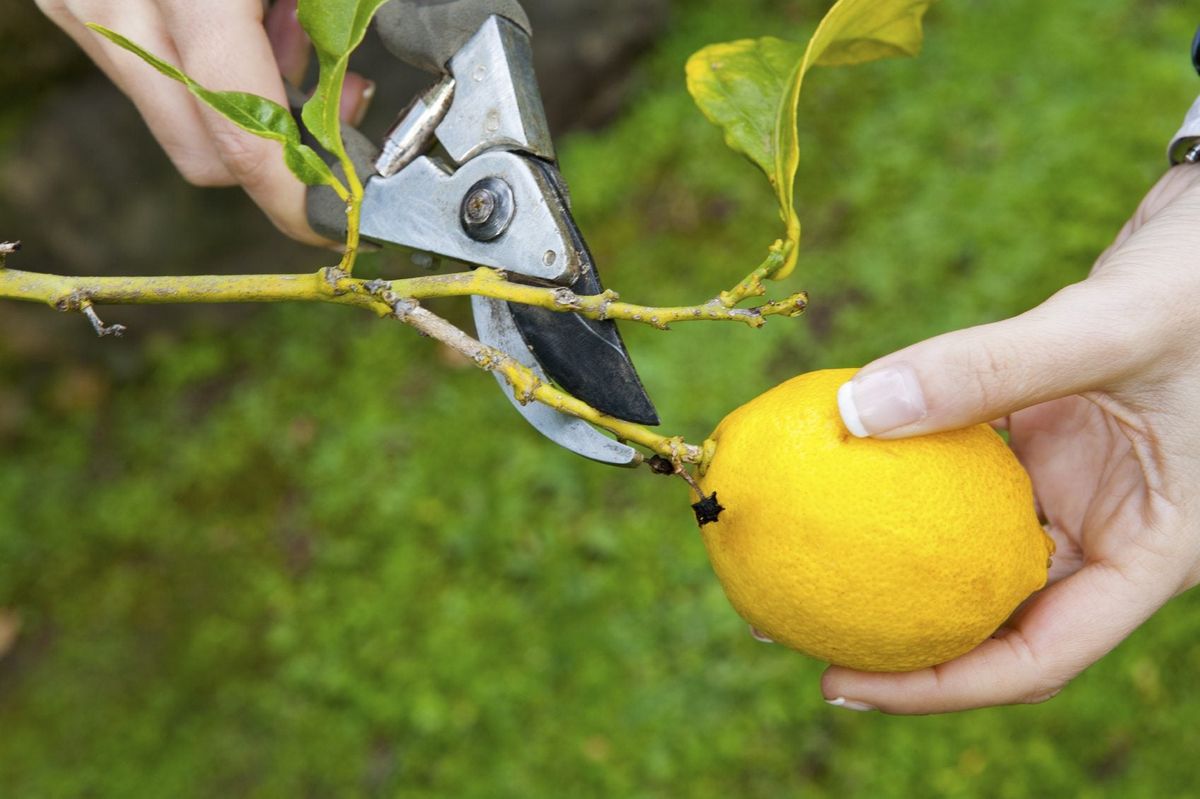
- Pruning Objectives: Remove dead, damaged, or diseased branches to prevent pest and disease infestations. Thinning out crowded branches enhances sunlight exposure and airflow, vital for healthy fruit development.
- Tool and Technique: Use clean, sharp pruning shears for precise cuts, reducing the risk of infection. Clean cuts promote quicker healing and minimize stress on the tree.
- Structural Training: Train the tree to achieve an open, well-balanced structure by selectively bending and tying branches. This encourages outward growth and discourages overcrowding, facilitating efficient nutrient distribution and light penetration.
- Regular Maintenance: Routinely shaping the tree ensures easier access during harvest and simplifies pest management. Regular upkeep promotes tree health and longevity.
- Expert Consultation: When in doubt, seek advice from local horticulturists or arborists specializing in citrus trees. Their expertise can provide tailored guidance for your Meyer lemon tree’s specific needs, ensuring optimal pruning and training practices.
Remember, a well-pruned and trained Meyer lemon tree not only enhances its aesthetic appeal but also boosts its overall health and productivity for years to come.
Protecting Your Meyer Lemon Tree from Pests and Diseases
Protecting your Meyer lemon tree from pests and diseases is crucial for ensuring its health and productivity. Lemon trees can be susceptible to various pests and diseases, which can significantly impact their growth and fruit production. By implementing preventive measures and proper care, you can create a favorable environment that minimizes the risk of infestations and infections.
| Issue | Symptoms | Treatment | Effects on Plants |
|---|---|---|---|
| Citrus Canker | – Raised corky lesions on leaves, stems, and fruit. – Water-soaked appearance. – Distorted or premature fruit drop. | – Prune and destroy affected branches or fruit. – Disinfect pruning tools after each cut. – Apply copper-based sprays preventatively. | Reduced health and productivity. |
| Citrus Leaf Miner | – Silvery trails or winding paths on leaves. – Leaf curling or premature leaf drop. | – Regularly inspect for damage. – Prune and destroy affected leaves. – Use insecticidal sprays for citrus leaf miners. | Weakened tree, susceptibility to other pests and diseases. |
| Phytophthora Root Rot | – Yellowing leaves. – Stunted growth. – Dark, mushy, or rotting roots. | – Improve soil drainage. – Avoid overwatering. – Apply fosetyl-aluminum-containing fungicides to soil. | Severe damage to roots, overall decline in vigor. |
| Citrus Black Spot | – Dark, sunken lesions on fruit skin. – Reduced market value. | – Remove infected fruit. – Maintain good hygiene. | Unappealing fruit appearance, potential economic impact. |
By taking proactive measures to address common pests and diseases, you can ensure the longevity and productivity of your Meyer lemon tree. Regular monitoring, proper pruning, and applying natural remedies when needed will go a long way in protecting your tree from infestations and infections. Stay vigilant, and your Meyer lemon tree will flourish, providing you with an abundance of luscious and juicy lemons for years to come.
“Natria 706230A Insecticidal Soap is a reliable ally in the fight against garden pests. Its natural formulation effectively targets a variety of insects while maintaining safety for both plants and beneficial insects. Easy application via its spray bottle ensures thorough coverage, though caution is advised in hot weather to prevent leaf burn. With its fast-acting and residual effects, it’s proven instrumental in keeping my garden pest-free with minimal hassle.”
“Garden Safe Insecticidal Soap has become my go-to solution for tackling pesky garden pests. Its plant-friendly formula effectively targets aphids, whiteflies, and spider mites without harming my citrus trees. The ready-to-use spray bottle makes application a breeze, even for beginners like myself. However, I’ve noticed that it requires frequent reapplication for long-lasting pest control, and it may cause leaf burn on sensitive plants. Despite these minor drawbacks, its environmentally friendly approach and effectiveness make it a valuable addition to any gardener’s arsenal.”
✅ Multi-Purpose: This insecticidal soap serves as both an insecticide and a miticide, offering versatile pest control for a wide range of common garden pests, including aphids, whiteflies, and spider mites.
✅ Fast-Acting: With its contact action, Natria 706230A Insecticidal Soap quickly kills pests upon application, providing rapid relief from infestations and minimizing damage to plants.
✅ Residual Effect: While gentle on plants, this insecticidal soap leaves behind a residual film that continues to repel and control pests even after application, offering ongoing protection for treated plants.
✅ Easy Application: Packaged in a convenient spray bottle, Natria 706230A Insecticidal Soap is easy to apply to affected plants, ensuring thorough coverage and maximum effectiveness with minimal effort.
❌ Limited Effectiveness on Certain Pests: While effective against many common garden pests, this insecticidal soap may not provide adequate control for all types of insects, requiring additional measures for complete pest management.
❌ Frequent Application Required: To maintain optimal pest control, regular and repeated applications of Natria 706230A Insecticidal Soap may be necessary, especially in the presence of heavy pest infestations or persistent insect activity.
❌ Residue Build-Up: Over time, the residual film left by this insecticidal soap may accumulate on plant surfaces, potentially affecting plant aesthetics and requiring periodic cleaning to prevent buildup.
❌ Odor: Some users may find the scent of Natria 706230A Insecticidal Soap unpleasant or strong, particularly when used indoors or in enclosed spaces, which could be a drawback for sensitive individuals or those with respiratory issues.
✅ Effective Pest Control: This insecticidal soap effectively targets common garden pests such as aphids, whiteflies, and spider mites, providing rapid relief from infestations without leaving harmful residues.
✅ Ready-to-Use: Packaged in a convenient spray bottle, Garden Safe Insecticidal Soap is ready to use straight from the bottle, making application quick and hassle-free for gardeners of all experience levels.
✅ Safe for Beneficial Insects: Unlike chemical insecticides, Garden Safe Insecticidal Soap does not harm beneficial insects like ladybugs and lacewings, allowing for integrated pest management strategies in the garden.
✅ Environmentally Friendly: With its biodegradable formula, Garden Safe Insecticidal Soap offers an environmentally friendly pest control solution that minimizes negative impacts on the environment and ecosystem.
❌ Potential Phytotoxicity: In some cases, this insecticidal soap may cause leaf burn or discoloration on sensitive plant species, particularly when applied during hot, sunny conditions or on stressed plants.
❌ Odor: Some users may find the scent of Garden Safe Insecticidal Soap unpleasant, especially when used in enclosed spaces or indoor settings, which could be a drawback for sensitive individuals or those with respiratory issues.
❌ Price: Compared to other pest control options, Garden Safe Insecticidal Soap may be relatively expensive, particularly for gardeners with large planting areas, which could affect its affordability and accessibility for some users.
❌ Limited Availability: Depending on your location, Garden Safe Insecticidal Soap may not be readily available at local garden centers or stores, requiring you to purchase it online or seek alternative products.
Recognizing and Addressing Common Issues with Meyer Lemon Trees
Meyer lemon trees are usually resilient and relatively easy to care for, but like any plant, they can face certain issues that may hinder their growth and development. By being able to recognize and address these common problems, you can ensure that your Meyer lemon tree thrives in your garden or indoor space.

- Leaf Yellowing or Leaf Drop:
- Causes:
- Overwatering: Excess water can lead to root rot and affect leaf health.
- Nutrient Deficiencies: Lack of essential nutrients (such as nitrogen, iron, or magnesium) can cause yellowing.
- Pests: Insects like citrus leaf miners or aphids can damage leaves.
- Solutions:
- Assess Watering: Adjust watering habits to maintain consistent moisture without waterlogging.
- Balanced Fertilizer: Use a citrus-specific balanced fertilizer to address nutrient deficiencies.
- Pest Control: Regularly inspect for pests and use appropriate treatments.
- Effects on Plants: Leaf yellowing or loss can weaken the tree.
- Causes:
- Fruit Splitting:
- Causes:
- Fluctuating Water Availability: Inconsistent watering can lead to fruit skin cracking.
- Temperature Extremes: Sudden temperature changes affect fruit development.
- Nutrient Uptake: Irregular nutrient absorption impacts fruit quality.
- Preventive Measures:
- Consistent Watering: Maintain even soil moisture (not too wet or too dry).
- Mulching: Apply mulch around the base to retain moisture and regulate soil temperature.
- Balanced Fertilization: Follow guidelines for proper nutrient supply.
- Effects on Plants: Fruit splitting reduces market value and affects appearance.
- Causes:
Stay tuned for the next section of the article, where we will delve deeper into maximizing fruit production for Meyer lemon trees and share valuable tips to encourage abundant blooms.
Maximizing Fruit Production: Tips for Encouraging Blooms
Encouraging abundant blooms is key to maximizing fruit production in your Meyer lemon tree. The following tips will help you create the optimal conditions for your tree to flourish and produce an abundance of delicious lemons.
1. Provide Ample Sunlight: Meyer lemon trees thrive in full sunlight, so it’s crucial to select a location that receives at least six to eight hours of direct sunlight daily. Ideally, choose a spot with southern or southeastern exposure to ensure your tree receives maximum sunlight throughout the day.
2. Optimize Soil Conditions: Well-draining soil with a pH level between 5.5 and 6.5 is essential for Meyer lemon trees. To achieve optimal soil conditions, mix in organic matter such as compost or well-rotted manure to improve drainage and nutrient availability. Regularly check and adjust the pH level using a soil testing kit to ensure it remains within the desired range.
3. Consistent Watering: Adequate and consistent watering is vital for the health and productivity of your Meyer lemon tree. Keep the soil consistently moist but not overly saturated. Aim to water deeply, providing sufficient moisture to reach the roots. However, it’s important to avoid waterlogged soil, as it can lead to root rot.
4. Pruning and Thinning: Regular pruning helps maintain the size and shape of your Meyer lemon tree while also promoting airflow and sunlight penetration. Prune dead or diseased branches to safeguard the overall health of the tree. Additionally, thinning out crowded branches allows for more light and air circulation, which encourages blooming and fruit production.
5. Nutrient Boost: Fertilizing your Meyer lemon tree at the right time and in the correct manner can significantly enhance bloom formation. Apply a citrus-specific fertilizer high in nitrogen, phosphorus, and potassium during the spring and summer months. Follow the manufacturer’s instructions for the appropriate dosage and frequency. Applying a citrus micronutrient spray can also provide the tree with necessary trace elements for healthy growth and blooming.
By implementing these tips, you can create an optimal environment for your Meyer lemon tree, stimulating abundant blooms and ultimately maximizing fruit production. Remember that consistency and proper care are key to nurturing your tree and enjoying a bountiful harvest.
Harvesting Meyer Lemons: Knowing When and How to Pick
To fully enjoy the sweet and tangy taste of Meyer lemons, it is important to know when and how to pick them. Harvesting your Meyer lemons at the right time ensures optimal flavor and juiciness. So, how can you tell when your lemons are ready to be picked?

- Color Indicator:
- Meyer lemons start green and turn bright yellow when ripe.
- However, color alone isn’t always reliable; use other methods to confirm ripeness.
- Texture Test:
- Gently squeeze the lemons.
- Ripe Meyer lemons should be firm yet slightly yielding.
- If they’re rock hard, they need more time; if too soft, they may be overripe.
- Harvesting Technique:
- Avoid pulling or twisting the fruit off the tree.
- Use sharp pruning shears or garden scissors to cut the lemons.
- Leave a small stem attached to prolong shelf life.
By mastering the art of harvesting Meyer lemons, you can fully savor the unique flavors they offer. So, the next time you see those vibrant yellow fruits hanging from your tree, remember these tips to ensure a bountiful and delicious harvest.
Storing and Using Meyer Lemons: Preserving Their Freshness
Storing and using Meyer lemons effectively is crucial to preserving their freshness and enhancing their flavor. After all, these vibrant yellow fruits are highly versatile in the kitchen, and their distinct taste can elevate both sweet and savory dishes. To ensure that you can enjoy the Meyer lemon’s unique flavor for as long as possible, proper storage techniques are essential.
:max_bytes(150000):strip_icc()/__opt__aboutcom__coeus__resources__content_migration__serious_eats__seriouseats.com__images__2016__04__20160422-preserved-lemons-jar-clara-schuhmacher-9da2370317ac48eb803370235b19bc20.jpg)
- Storage:
- Cool and Dry: Store Meyer lemons in a cool and dry place, preferably in the refrigerator.
- Prevent Moisture Loss: To avoid drying out, place them in a perforated plastic bag or a fruit and vegetable drawer with high humidity settings.
- Culinary Uses:
- Savory Dishes:
- Squeeze Meyer lemon juice over roasted vegetables or grilled fish for a burst of citrus flavor.
- Add zest to marinades or salad dressings.
- Sweet Treats:
- Use Meyer lemon juice and zest in desserts like lemon bars, sorbets, or pies.
- Incorporate them into baked goods for a delightful twist.
- Savory Dishes:
Whether you’re utilizing freshly squeezed juice, zesty zest, or the fruit itself, incorporating Meyer lemons into your culinary endeavors can add a burst of brightness to your dishes. Understanding how to properly store and use these lemons is key to preserving their freshness and maximizing their flavor. By following these guidelines, you can elevate your cooking and fully enjoy the unique characteristics of Meyer lemons.
Troubleshooting: Troublesome Symptoms and How to Solve Them
When growing a Meyer lemon tree, it is essential to be aware of the potential issues that may arise. Some common symptoms that gardeners commonly encounter include yellowing leaves, leaf drop, fruit drop, and stunted growth. These symptoms could be indicative of various underlying problems, such as nutrient deficiencies, pests, diseases, or improper care.
| Meyer Lemon Tree Troubleshooting | Common Symptoms and Solutions |
|---|---|
| 1. Yellowing Leaves | – Nutrient Deficiency: Apply a balanced fertilizer, especially high in nitrogen. |
| – Overwatering: Ensure well-draining soil and adjust watering frequency. | |
| 2. Leaf Drop | – Watering Issues: Check soil moisture; avoid both overwatering and underwatering. |
| – Pest Infestation: Inspect for pests like aphids and treat with neem oil if necessary. | |
| 3. Citrus Canker or Diseases | – Pruning: Remove infected branches; apply copper-based fungicides as preventive measures. |
| – Sanitation: Keep the area around the tree clean to prevent disease spread. | |
| 4. Fruit Drop Before Ripening | – Overcrowding: Thin out excess fruit to promote better nutrient distribution. |
| – Fertilization: Ensure the tree receives adequate nutrients during the growing season. | |
| 5. Curling or Yellowing Leaves | – Pests (e.g., Aphids): Treat with insecticidal soap or introduce natural predators. |
| – Nutrient Deficiency: Check soil nutrient levels and supplement as needed. | |
| 6. Slow Growth or Stunted Appearance | – Nutrient Imbalance: Provide a complete citrus fertilizer with micronutrients. |
| – Sunlight Exposure: Ensure the tree receives sufficient sunlight for healthy growth. | |
| 7. Blossom Drop | – Temperature Fluctuations: Protect the tree from sudden temperature changes. |
| – Pollination Issues: Introduce pollinators or gently hand-pollinate the blossoms. | |
| 8. Cracked or Split Fruit | – Inconsistent Watering: Maintain consistent soil moisture to prevent fruit cracking. |
| – Mulching: Apply mulch around the base to retain soil moisture and regulate temperature. |
Extending the Harvest Season: Overwintering Your Meyer Lemon Tree
Overwintering your Meyer lemon tree is crucial for extending the harvest season and ensuring the continued growth and health of your plant. As temperatures drop during the winter months, providing protection for your lemon tree is essential to prevent damage and encourage fruit production in the coming seasons.
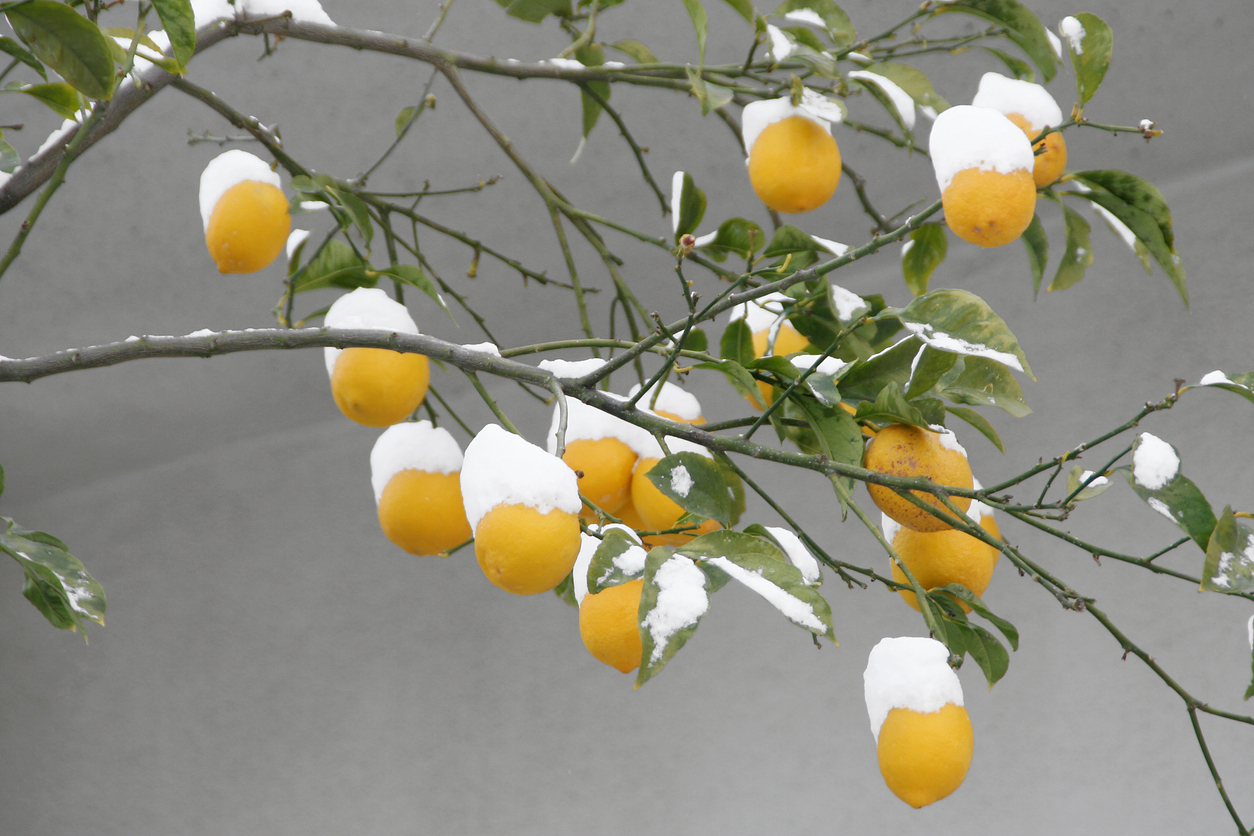
- Pre-Winter Preparation: Before frost sets in, inspect the tree for pests and diseases, pruning away any damaged branches for optimal health.
- Transplanting Process: Gently loosen soil around the base of the tree and transplant it into a spacious container with well-draining soil.
- Indoor Placement: Position the container indoors near a south-facing window to ensure the tree receives at least 8 hours of sunlight daily.
- Temperature Considerations: Maintain indoor temperatures around 50-55°F (10-13°C) to mimic the tree’s natural winter conditions.
- Watering Routine: Water sparingly, allowing the top inch of soil to dry out between waterings to prevent overwatering.
- Humidity Management: Monitor indoor humidity levels, supplementing with a humidifier or water tray to maintain optimal moisture levels for the tree’s health.
Sharing the Joy of Growing Meyer Lemon Trees: Propagation Methods
Propagation is an exciting way for gardening enthusiasts to expand their collection of Meyer lemon trees and share the joy of growing these delightful citrus fruits. There are several effective methods to propagate Meyer lemon trees, each with its own advantages and requirements.

- Seed Propagation:
- Seed Extraction: Extract seeds from mature Meyer lemons and rinse them thoroughly to remove any pulp.
- Soaking: Soak the seeds in water for 24 hours to promote germination.
- Planting: Plant the seeds in a well-draining potting mix, keeping the soil consistently moist (but not waterlogged).
- Patience: With care and patience, the seeds will germinate and grow into Meyer lemon seedlings.
- Stem Cuttings:
- Selecting a Stem: Choose a healthy stem with a few leaf nodes from an existing Meyer lemon tree.
- Clean Cut: Make a clean cut just below a leaf node.
- Rooting Hormone: Dip the cut end in a rooting hormone to encourage root development.
- Planting: Plant the cutting in a container with well-draining, nutrient-rich potting mix.
- Provide Ideal Conditions: Ensure proper moisture and warmth for successful root establishment.
Propagation methods provide gardening enthusiasts with an opportunity to create new Meyer lemon trees, multiplying the joy of growing, nurturing, and sharing these delicious fruits. Whether you choose seed propagation or cuttings, each method offers its unique rewards and challenges, allowing you to embark on a fulfilling journey of expanding your garden and sharing the beauty of Meyer lemon trees with others.
Watch video for more information:
FAQ
Can I grow a Meyer lemon tree from a seed?
Yes, you can grow a Meyer lemon tree from a seed, but keep in mind that it may not produce fruit true to the parent tree. It is recommended to use other propagation methods for consistent fruit production.
How long does it take for a Meyer lemon tree to bear fruit?
Generally, a Meyer lemon tree takes around 3 to 5 years to bear fruit. However, this can vary depending on various factors such as growing conditions and the age of the tree when it was planted.
Can I propagate a Meyer lemon tree through air layering?
Yes, air layering is a viable method for propagating Meyer lemon trees. It involves encouraging the growth of roots on a branch while it is still attached to the parent tree, and then removing and planting it as a new tree.
Is grafting a recommended method for propagating Meyer lemon trees?
Yes, grafting is a commonly used method for propagating Meyer lemon trees. It involves joining a piece of the desired Meyer lemon variety, known as the scion, onto a different citrus tree rootstock.
How often should I prune my Meyer lemon tree for optimal growth?
Meyer lemon trees benefit from regular pruning, ideally once a year. Prune during the dormant season to remove dead or damaged branches, encourage air circulation, and shape the tree for better fruit production.
What are some common pests and diseases that can affect Meyer lemon trees?
Common pests that can affect Meyer lemon trees include aphids, scale insects, and citrus leaf miners. Common diseases include citrus canker, citrus greening, and root rot.
Can I preserve Meyer lemons for longer use?
Yes, Meyer lemons can be preserved by juicing and freezing them in ice cube trays or by making lemon preserves such as marmalade or lemon curd.
How can I overwinter my Meyer lemon tree to extend the harvest season?
To overwinter your Meyer lemon tree, bring it indoors to a cool and bright location, ideally with temperatures between 45-55°F (7-13°C). Reduce watering and fertilization, and provide adequate light to ensure the tree survives the winter.
Can I share cuttings from my Meyer lemon tree with others?
Yes, you can share cuttings from your Meyer lemon tree with others for propagation purposes. Make sure to follow proper methods such as using sterile tools and providing the cuttings with suitable growing conditions.

Studied Agricultural Engineering-Plant Protection at University of California, Davis.
Head of Content writing team at Southelmontehydroponics.com



